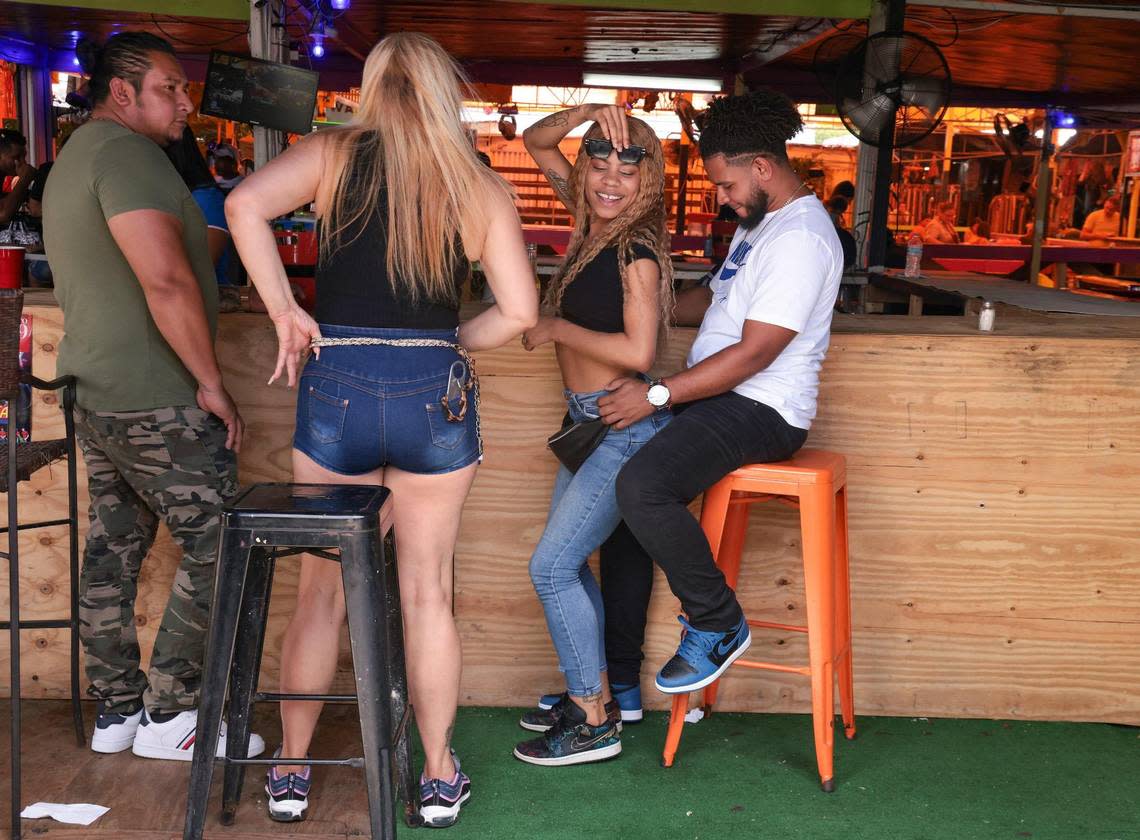‘This was our mall.’ What is lost when a popular flea market closes? More than you think
This is the best time for Claribel Vasquez’s little juice stand at the Opa-locka Hialeah Flea Market. Children on summer vacation, thirsty from scampering around the teeming open-air market, buy creamy coconut smoothies, sugar cane juice splashed with kiwi and pineapple drinks infused with ginger.
In many ways, these kids are following in her footsteps — the same path walked by generations of immigrant families in South Florida.
When Vasquez arrived as a teen to Miami from the Dominican Republic in 1987, she strolled the sprawling booths every Sunday with her aunt, buying vegetables, browsing shoes and snacking on roasted corn. She’d repeat the weekly ritual of visits with her own daughters, and then their children, and eventually would open her own small business at the flea market.
“I didn’t know what a mall was,” said Vasquez, 51. “This was our mall.”
After nearly four decades in operation, the Opa-locka Hialeah Flea Market is slated to shut down on Sept. 30. Its New York-based owners have decided to capitalize on its increasingly valuable 43 acres of real estate wedged between Hialeah, Miami Lakes and Miami Gardens in northwestern Miami-Dade County.
Some vendors may relocate to a smaller indoor space at a nearby clothing wholesaler, Atlantic Hosiery, but the closure of this massive and massively popular site has angered many of the market’s mom-and-pop business owners and is another sign of the social and economic changes wrought by a wave of redevelopment and gentrification across South Florida.
With the demise of flea markets that once dotted South Florida, the informal economy that once helped support underserved communities shrinks. For many struggling, cash-strapped newcomers from Cuba, Haiti, the Dominican Republic and elsewhere, renting a flea-market booth was the original side gig and the marketplaces provided inexpensive shopping options long before dollar stores were strip-mall staples.
The place also happens to boast a particularly memorable and colorful history among flea markets that once dotted the South Florida landscape — one marked by fierce business wars, political corruption, ties to the Israeli mob, and a catchy TV jingle earworm that burrowed into Miami’s brain in the early 1990s.
Political payoffs, Israeli mobsters, wrestling matches: The flea market’s colorful past
But the legacy is deeper for countless people like Vasquez.
“There’s a lot of people who depend on this place,” Vasquez said. “For humble people of humble means, they’re losing the place where they come to buy their fruits, to buy their groceries.”
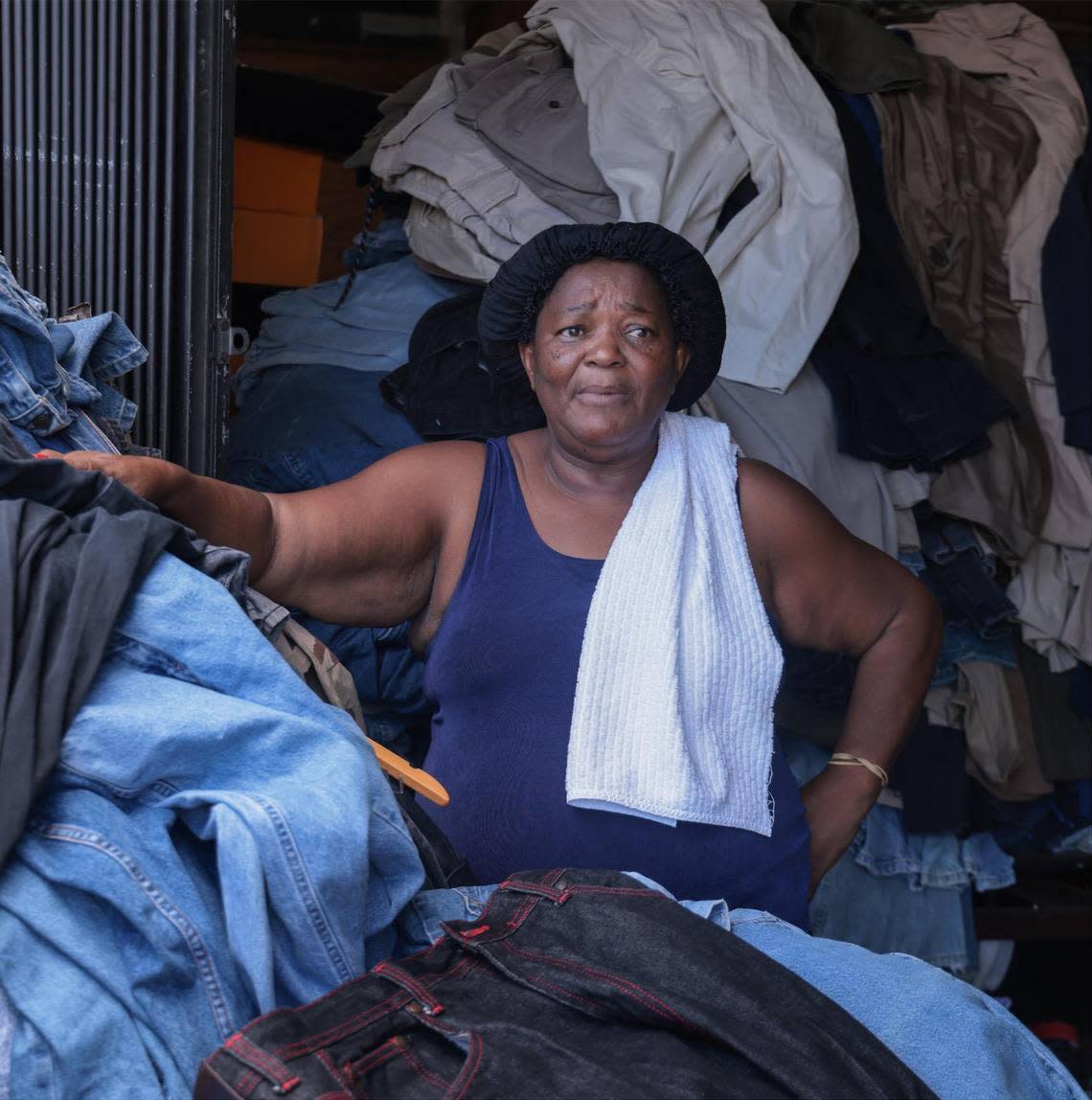
In a community that has long been marked by the social tensions among newly arriving immigrants, the flea market also was perhaps the one place where those tensions went away — it was not unusual for Haitians and Dominican vendors to strike up friendships and business arrangements.
“It was a safe space for people who might have felt like outsiders elsewhere,” said Corinna Moebius, a writer and cultural anthropologist who has spent time at the flea market. “There was this feeling that vendors were looking out for each other and looking out for their customers. More than just businesses will be lost. You’re losing a network of relationships. You’re unraveling a cultural safety net.”

Scott Miller, the longtime general manager of the flea market, said that over the years, the vendors were roughly half Black and Hispanic. “Our demographics mirrored that of Dade County,” Miller said. “We were Miami, at that time.”
And for those customers and vendors, the flea market also afforded something else — the ability to haggle, he said.
“The people in the community lose their bargaining power,” Miller said of the market’s closing. “Normally, people aren’t going to walk into Macy’s and try and bargain over a bottle of cologne.”
Flea Markets No More
For many South Floridians, the Opa-locka Hialeah Flea Market is a place they may have heard of but never actually visited. First opened in 1985 at 12705 NW 42nd Ave., it is surrounded by warehouses and far removed from Miami-Dade’s beaches, nightlife, suburbs and traditional malls and strip malls.
But it’s also a bustling place, vibrant with all the smells and stuff of Miami’s polyglot of cultures sold by more than 700 vendors. Shoppers can get their tires changed, buy cheap clothes and cookware, cellphones, couches, toys, power tools, fresh fish, all sorts of foods and even roosters and goats for religious Santería sacrifices — and celebrate by downing beers, eating a thick cornmeal cake known as a pupusa and listening to live salsa bands.
For Hispanics, it’s known as El Pulguero, the flea place. For Haitians, it’s the Ti-Mache, or the little market — decided understatement for what was among the biggest of the flea markets that popped up across Dade County in the 1980s, an expansion fueled by an increasing immigrant population from across Latin America and the Caribbean.
Places like the Tropicaire Flea Market, on Bird Road west of the Palmetto Expressway, featured hundreds of booths on the site of a drive-in movie theater. Vendors paid between $7 and $27 per day for spaces. It’s now a strip mall.
The International 54th Street Flea Market was in the heart of the predominately Black Brownsville-Liberty City area, a retail desert, especially after the old Ames department store went belly-up. “We’re close to the people we do business with. That helps,” a manager said in 1990.
Today, the land is home to a Wendy’s fast food restaurant.
The indoor Flea Market USA, also in the heart of Liberty City at 3015 NW 79th St., drew Black clientele from the east, and Hispanics from next-door Hialeah. Yanis Carreto, a writer and photographer, lived in a trailer park across the street and fondly remembered childhood visits, riding the carousel and gawking at the giant giraffe near the food court and the distinct red-white-and-blue checkered floor.

In 2019, as it was slated to close after nearly 40 years, Carreto returned to take photos of the dying marketplace, where people once got tattoos, haircuts and gold teeth, bought phones, gold chains and custom-printed T-shirts.
“Many booths have sat closed and abandoned for years. Mismatched folding chairs and tables, the likes of those you would find in a home, are scattered throughout the flea market,” Carreto wrote in her blog. “Even torn and worn couches line the area surrounding the stage.”
Today, the property is being developed into a mixed residential-retail center.
The Opa-locka Hialeah Flea Market became a landing spot for many displaced vendors. Irma Moreau, who sells clothes and other goods, was forced there after having to leave Tropicaire and Flea Market USA. She’s exploring a spot at North Miami’s Seventh Avenue Flea Market — but the stalls there are too small to house her stacks and stacks of comforters, bedspreads and women’s underwear.
“My store is my baby,” she said. “It’s not easy to find another place.”
There are still flea markets, of course, the biggest being the famous Swap Shop in Lauderhill, 88 acres of marketplace that includes a drive-in movie theater and even a Ferrari collection. There’s also the hipster variety, like the tiny Wynwood Marketplace, which hawks gemstones, vintage T-shirts and “bohemian goods.”
Still, the trend line looks bleak, with flea markets disappearing across the country. In Florida during the past couple of years, particularly as the pandemic ravaged in-person shopping, longtime flea markets have shuttered in Tampa, Pensacola and St. Augustine.
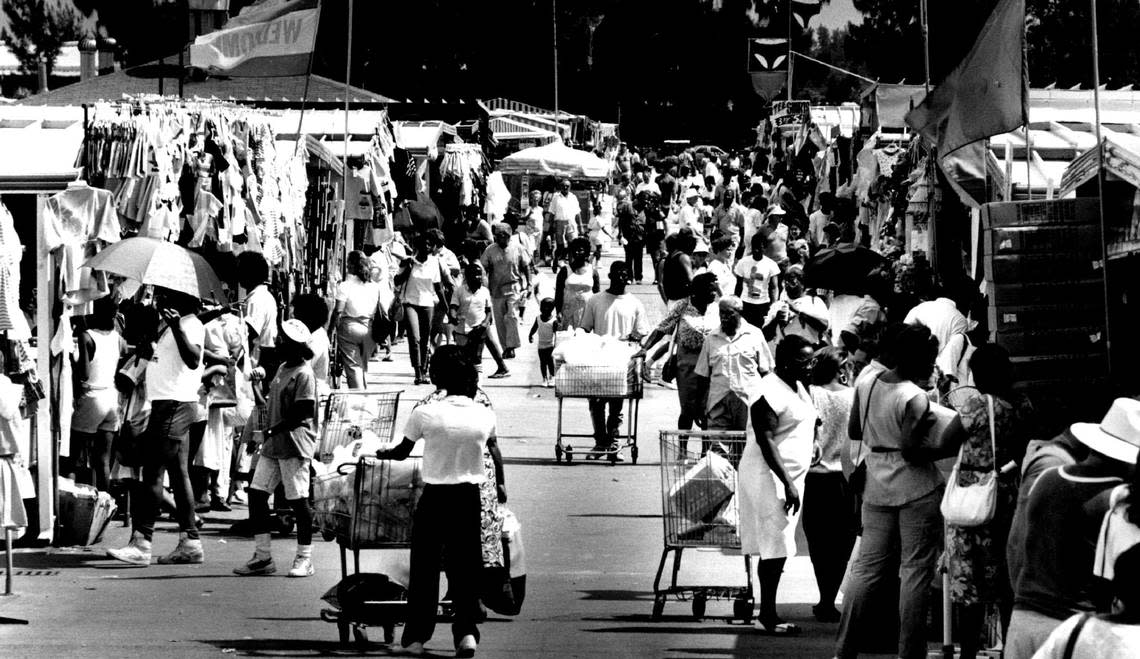
South Florida is not unusual, given the rising cost of land, the need for housing and redevelopment and the rise of online retail and changes in how people gather to socialize, said Maria Ilcheva, of Florida International University’s Jorge M. Pérez Metropolitan Center, a think tank that explores housing and market issues.
“It’s unavoidable, given the influx of people — previously from abroad, and now over the last couple years from other parts of the United States,” said Ilcheva, the center’s assistant director of planning and operations. “From a development perspective, it would make sense for someone who owns the land. There is a lot of pressure to redevelop.”
The Opa-locka Hialeah Flea Market was purchased in 2017 by a New York company called Gramercy Property Trust, which paid $80 million for the property and signed a new deal with the operator to keep the flea market. Now known as Link Logistics, the company is planning to develop the parcels into six new buildings dedicated to commercial and logistics use.
A Link Logistics spokesperson said the company is focused on “being a positive force for economic growth in the local communities where we operate, and we recognize the important place the Opa-locka Flea Market holds in the community.“
“If approved, our proposed development project would represent more than $90 million in new investment and generate an estimated 1,000 construction jobs and 765 permanent high-quality jobs for the community.”
Flea market vendors were originally given just three weeks to leave the property, but have since been given a reprieve until Sept. 30, to allow vendors to find new places to go. Atlantic Hosiery, a longtime Opa-locka clothing wholesaler and outlet, is working with the city to establish an indoor market in its nearby headquarters; the operation is expected to be smaller, without the live music, restaurants and animal shops.
‘A foundation for hard work’
For some businesses, the Opa-locka Hialeah Flea Market opened the door to middle-class success in a new homeland.
Vendors like Israel Perez, an immigrant from Cuba, started small. During the week, Perez delivered meats to markets. His wife, Esther Perez, worked at a factory in Hialeah. But he and his family would collect second-hand tools and appliances, selling at a single stand at the Opa-locka Hialeah Flea Market in the 1980s.
Business eventually blossomed, the merchandise filling two cube trucks. Their client base grew to include not just fellow Cubans, but Haitians and Jamaicans who bought goods for resale on the islands. The family eventually operated four spots, manned by various family members. His brother, Leon Perez, was in a wheelchair and sold bubble gum to vendors near the iconic archway entrance.
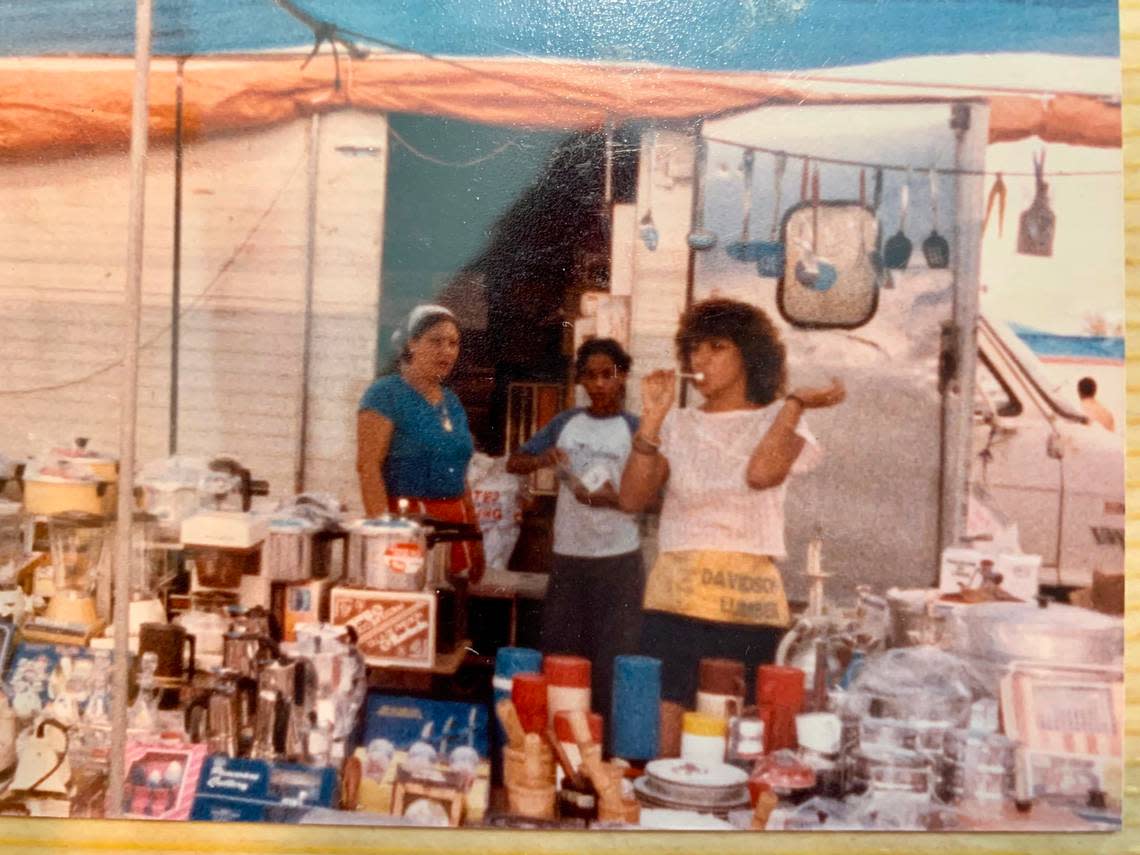
“My brother and I hated it. We were 11 and 12, and that’s where we would spend our weekends,” said Mercedes Holtzman, 55, Israel’s daughter. “But it was hard times and that’s what we had to do. I remember my brother and I had great tans and we would never tell anyone we had been working at the flea market.
“It really gave us a foundation for hard work. And during the week, you’d have to restock everything, go buy all the merchandise. And we’d have to get there before the sun came out, and take it down every day. It was 4:30 in the morning to 4:30 in the afternoon.”
Eventually, the success of the business allowed Perez, who has since passed away, to buy his first house in Miami Beach — and also an apartment building.
Another vendor, Carlos Rodriguez, 58, a native of Honduras, has spent nearly two decades selling linens supporting his four children. He currently pays $380 a week for a 24-by-24-foot space — and so far, he hasn’t found anywhere that can give him a comparable deal.
“I think there are a lot of people who will shut down because they have nowhere to go,” Rodriguez said.
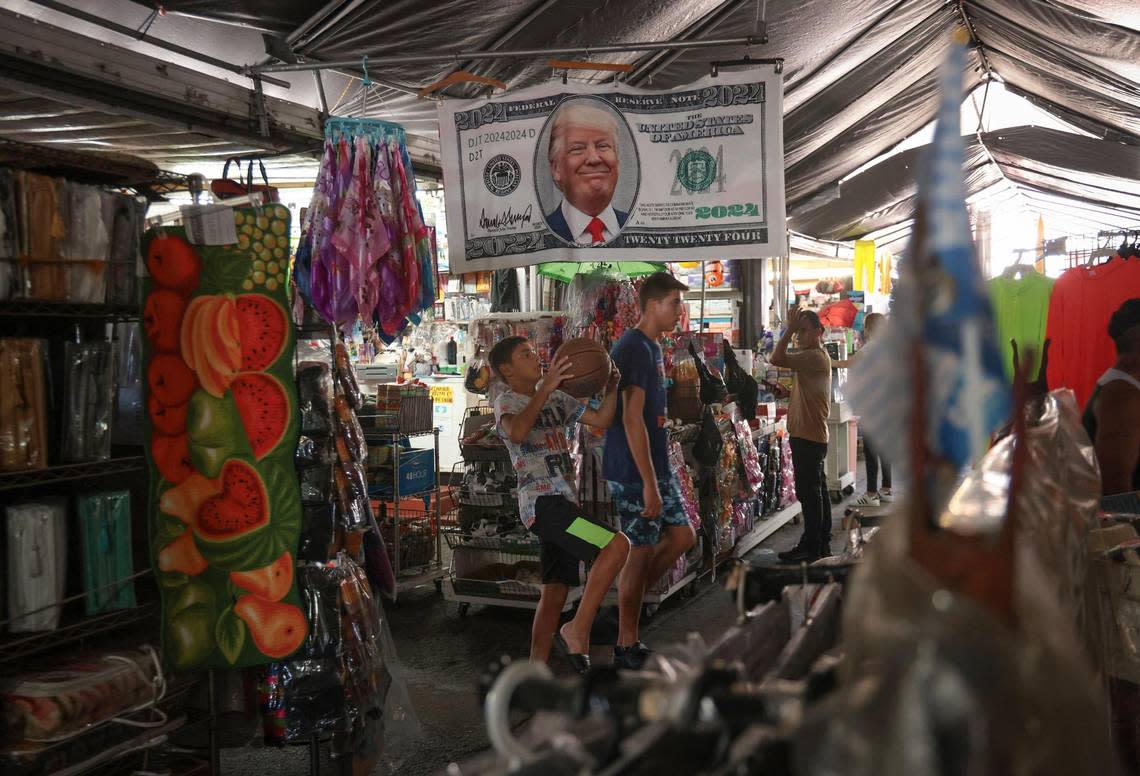
‘Even my kids are shopping online’
For the newest generation of up-and-coming vendors and the customers who need niche and cheap goods, the flea market’s closing came as a shock, even if many businesses there hadn’t exactly been thriving.
On a recent muggy Sunday afternoon, the flea market hummed with activity, reggaetón blaring in the background, the muddy parking lots jammed with cars. Among vendors, rumors were ripe — some mistakenly believed retail giant Amazon was buying the land, others that condos would soon be built atop their former stalls.
Moreau and her husband pay $385 a week, and normally just make enough to pay the stall rent. She recalled that when she heard the market was closing, she “was so shocked that my stomach started hurting. I couldn’t eat, I couldn’t drink.”
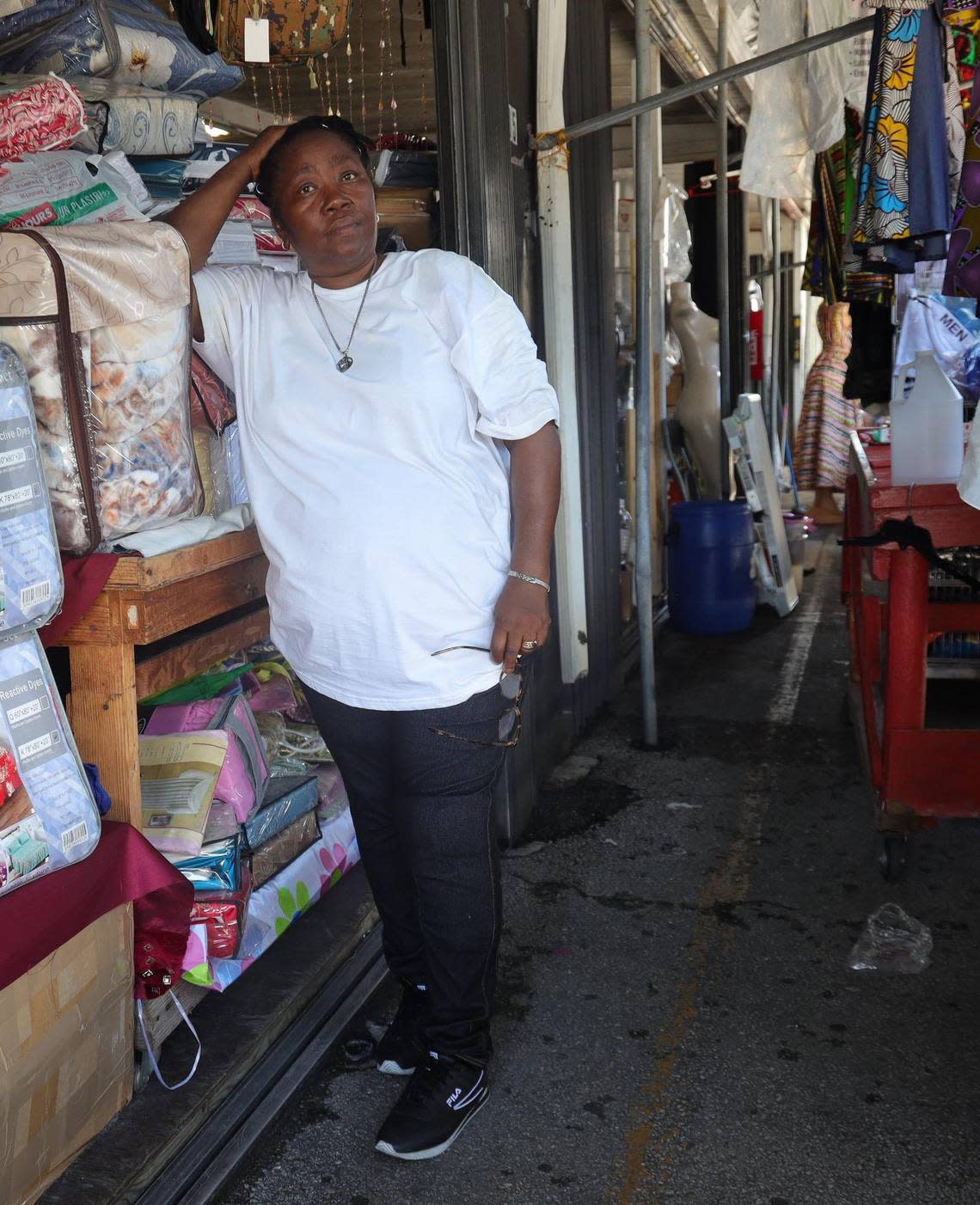
But she acknowledged that online shopping and the global pandemic had left her hanging by a thread.
“Everybody, even my kids [are] shopping online,” she said. “Only a few people are buying in the flea market.”
A few aisles away, Robert Pelissier, a 71-year-old native of Haiti, carefully examined pigeons stacked in cages at the small corner lot at Tere Pet Shop. Also inside the cages were roosters, doves and guinea fowl. Eggs and honey from farms were for sale, as were beads and incense. The stall largely catered to followers of the Afro-Cuban Santería religion, who buy birds for sacrificial offerings, a common practice in Miami.
But Pelissier is a bird enthusiast and comes to buy doves. He implored the stall operator to keep him informed on their new location, whenever they have one. A sound interrupted: “Baaaaaa.”
“I hear goat. You got goat?” Pelissier asked the employee named Lazaro.
Lazaro, slouched in a rickety rocking chair, smiled. In the bed of a pickup truck next to the stall, a young goat bleated from inside a large dog kennel.
“Of course,” Lazaro said. “We sell everything.”
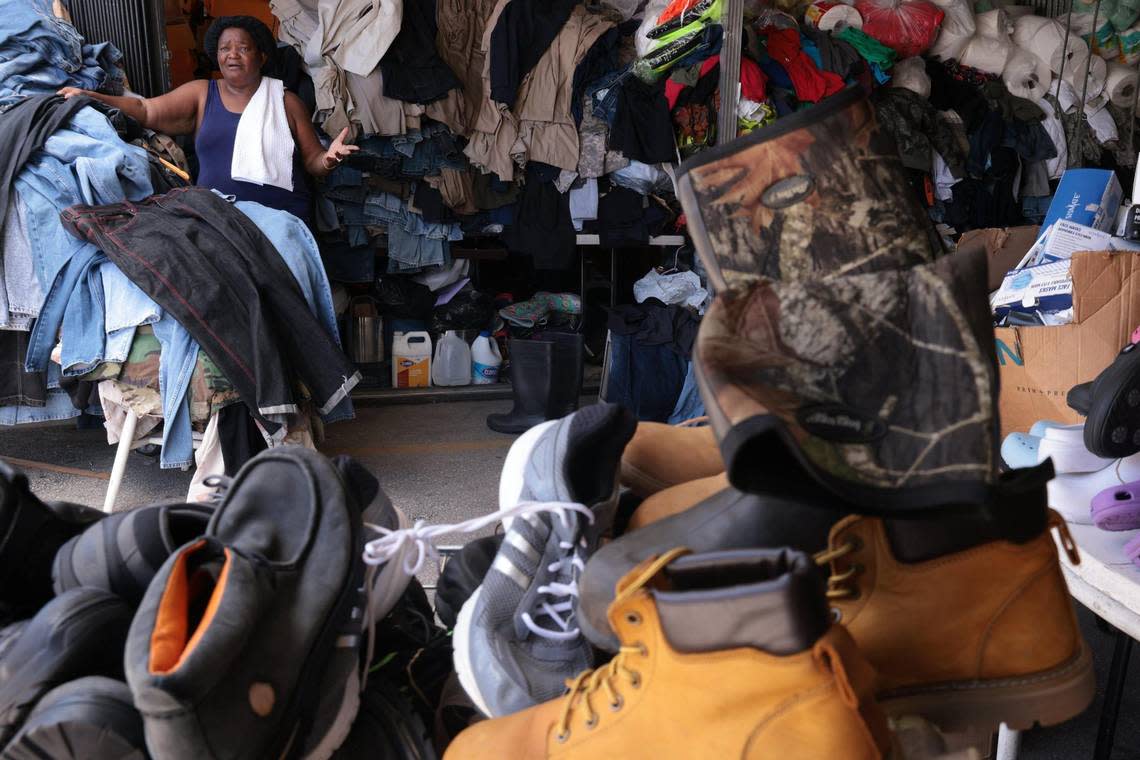
On the other side of the market, Lyz Vasquez, 31, watched as her husband and a stall employee loaded up a black velvet twin size bed in their pickup truck. She’s a regular here. Vasquez rushed back to pay the owner.
“I feel bad,” she said of the market’s closing. “Other places, you don’t get the deals like you do here. This bed cost me $160. Anywhere else, it would cost me $1,000 or $1,500.”
Deep in the interior of the market, Mercedes Egozcue picked through men’s polos, two for $12. Every few months, she comes here to buy clothes, to take back to her native Cuba, some pieces for family, others to sell, an informal but common business for more recent Cuban immigrants.
“It’s an injustice what they’re doing here,” Egozcue said, as the shop owner, Alex Hayek Sr., and his 17-year-old namesake son looked on.
The Hayek family, which has run this shop for 15 years, isn’t sure where they’ll end up. Still, in a display of the entrepreneurial spirit that has long defined the flea market, Hayek handed her a card with his phone number on it.
“Come find my business,” he said.
